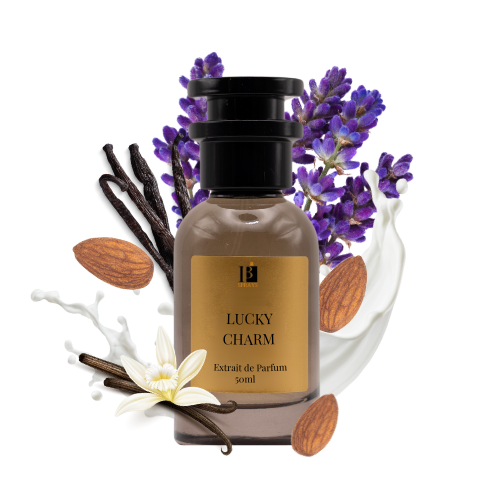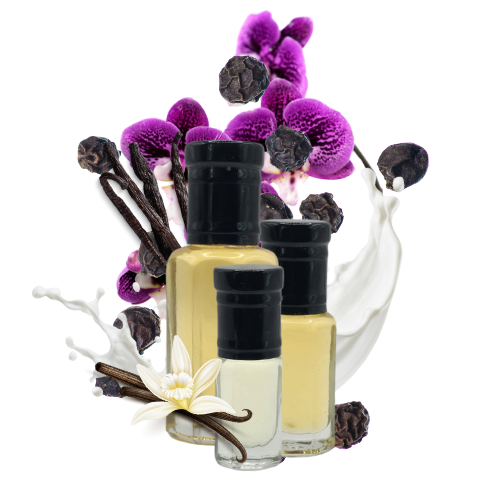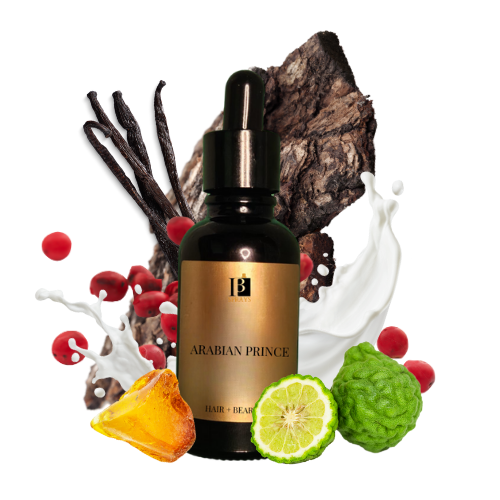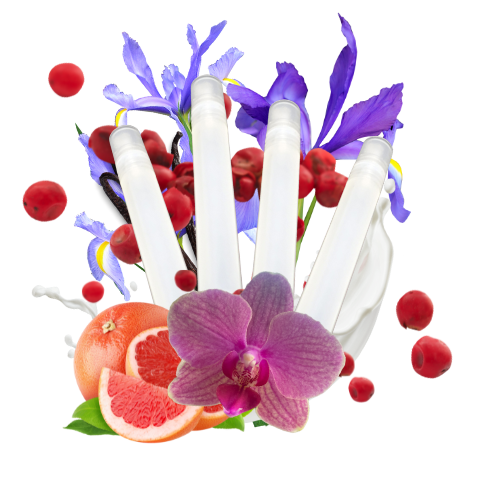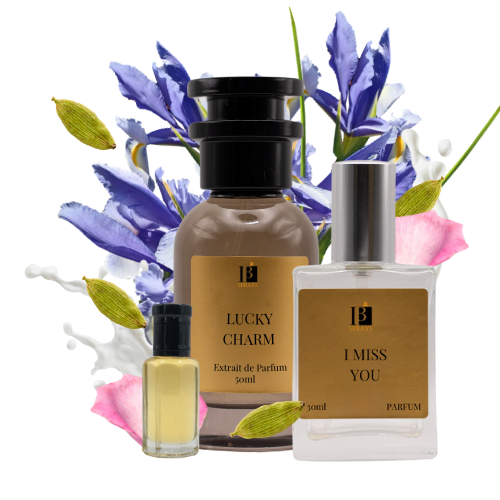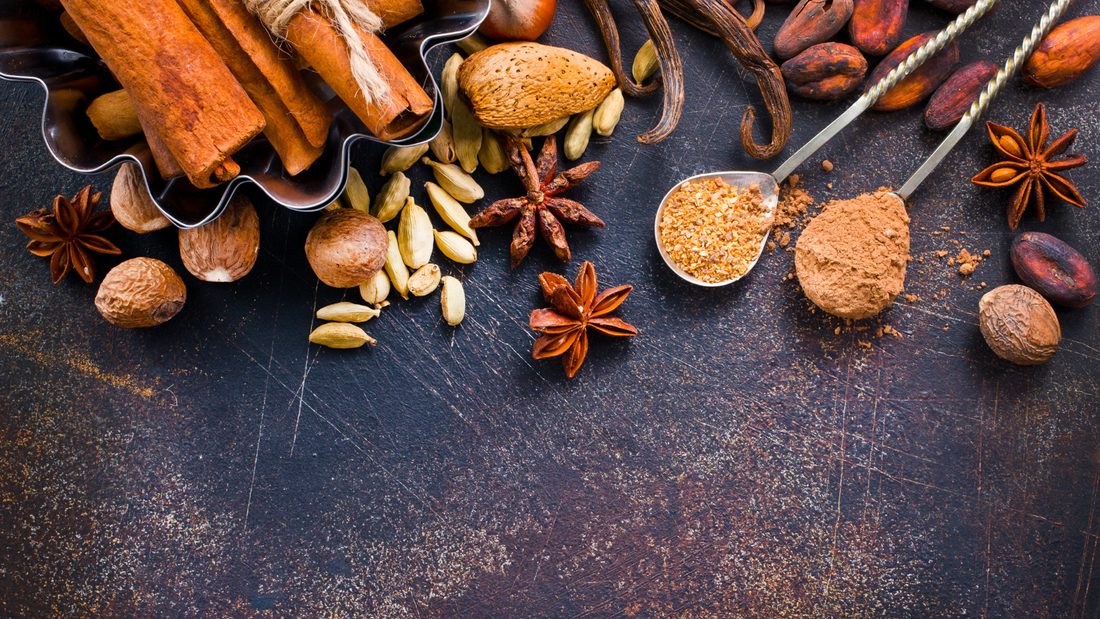
Perfume 101: Understanding Notes and Accords
Share
Perfume is a powerful form of self-expression, an invisible accessory that leaves a lasting impression. The right scent can evoke memories, boost your mood, and enhance your presence. However, choosing the perfect perfume can be a daunting task. With countless options on the market, understanding the language of perfumery is the first step in finding a fragrance that truly speaks to you. Welcome to Perfume 101, where we delve into the fascinating world of perfume notes and accords, demystifying the art of fragrance selection.
The Fragrance Pyramid: Unveiling Perfume Notes
Imagine a pyramid when you think of a perfume's structure. At the top, you have the top notes, the initial burst of scent that greets your senses. These notes are vibrant and bold but fleeting, typically lasting around 15 minutes to an hour. They serve as the hook, enticing you to explore the perfume further.
Middle notes, also known as heart notes, are the fragrance's core. They emerge after the top notes have evaporated, becoming more noticeable. These notes form the perfume's character, defining its essence and lasting several hours.
Finally, at the base, you find the base notes. These notes have the most extended staying power, lingering on your skin for hours, sometimes even days. They anchor the fragrance, giving it depth and complexity.
Perfume notes come from various natural and synthetic sources, each contributing to the scent's character. Here are some common examples:
- Citrus notes: Often found in top notes, these notes are fresh, zesty, and uplifting. Think of lemon, orange, or bergamot.
- Floral notes: Florals can be found in all levels of a perfume pyramid. They range from the sweetness of rose and jasmine to the delicate freshness of lily of the valley.
- Woody notes: With a grounding and earthy quality, woods like cedar, sandalwood, and vetiver are frequently used in base notes.
- Oriental notes: Think of spices like cinnamon, cloves or exotic resins like frankincense. These are commonly used in the base, creating a rich and warm scent.
- Gourmand notes: These notes invoke a sense of sweetness, often reminiscent of edible treats, such as vanilla, caramel, or chocolate.
Accords: Harmonious Blends of Notes
Understanding perfume notes is essential but only part of the puzzle. The magic of perfume often lies in its accords, which are the result of combining various notes in a harmonious blend. Accords can be floral, fruity, oriental, chypre (a blend of mossy and woody scents), and more. Each accord creates a distinct olfactory experience.
- Floral accords: These are classic and timeless, combining various floral notes to create a harmonious bouquet. Chanel No. 5 is a prime example, featuring a rose, jasmine, and ylang-ylang blend.
- Fruity accords: These add a playful and juicy dimension to fragrances. Scents like Clinique Happy mix crisp apple and sweet plum for a refreshing fruity accord.
- Oriental accords: With a touch of spice and warmth, oriental accords often include notes like vanilla, patchouli, and amber. Opium by Yves Saint Laurent exemplifies this category.
- Chypre accords: These are often associated with earthy and mossy notes, sometimes accompanied by citrus. Guerlain's Mitsouko is a famous chypre fragrance with a unique blend of peach, rose, and oakmoss.
- Fougère accords: Commonly found in men's fragrances, fougère accords combine lavender, oakmoss, and coumarin to create a fresh and masculine scent. A classic example is Houbigant Fougère Royale.
Fragrance Compositions: Finding the Right Blend
In addition to understanding notes and accords, comprehending different fragrance compositions is crucial. Fragrances are often classified into several categories:
- Eau de Cologne (EDC): These have a lower concentration of fragrance oils, typically around 2-4%, making them light and refreshing. They don't last as long as other types but are ideal for a quick pick-me-up.
- Eau de Toilette (EDT): More common and affordable, EDT contains about 5-15% fragrance oils. These are great for daily wear and typically last 3-4 hours.
- Eau de Parfum (EDP): A more concentrated option with 15-20% fragrance oils, EDPs are longer-lasting, staying on your skin for 5-8 hours. They offer a good balance between sillage (the scent trail left behind) and longevity.
- Perfume (Parfum): The most potent and concentrated form, with around 20-30% fragrance oils. Perfumes can last up to 24 hours or even longer, with just a few drops needed for a lasting impression.
The composition you choose should align with your preferences and the occasion. Lighter options like EDT are great for daytime wear, while EDP or perfume/parfum is perfect for special evenings or events.
The Art of Layering
Layering fragrances is an art that allows you to create a unique olfactory identity. Mixing perfumes, body lotions, and oils can create fascinating and bespoke scents. However, some guidelines apply:
- Complementary notes: When layering, choose fragrances with complementary notes to avoid clashing scents.
- Scent strength: Consider the concentration of each product. A strong perfume should be balanced with a lighter-scented body lotion.
- Test and adjust: Don't hesitate to experiment. Apply lightly, and if you're happy with the result, go for it.
- Personal signature: Layering allows you to develop a personal scent signature, making your fragrance distinct.
Finding Your Signature Scent
Selecting a signature scent should be a journey, not a rush. Don't hesitate to explore different perfume families, experiment with accords, and test a variety of compositions. Visiting perfume shops and sampling scents on your skin is a valuable part of the process. Your skin's unique chemistry can alter how a fragrance smells, so a scent that suits a friend perfectly might not be your ideal choice.
Don't be influenced by trends; your fragrance should resonate with you on a personal level. Perfume should tell your story, evoke emotions, and bring joy and confidence. Once you discover your signature scent, it becomes an extension of your identity, creating lasting memories and unforgettable impressions. In the world of perfume, your scent is your silent but powerful voice. Embrace it and let it speak volumes.


